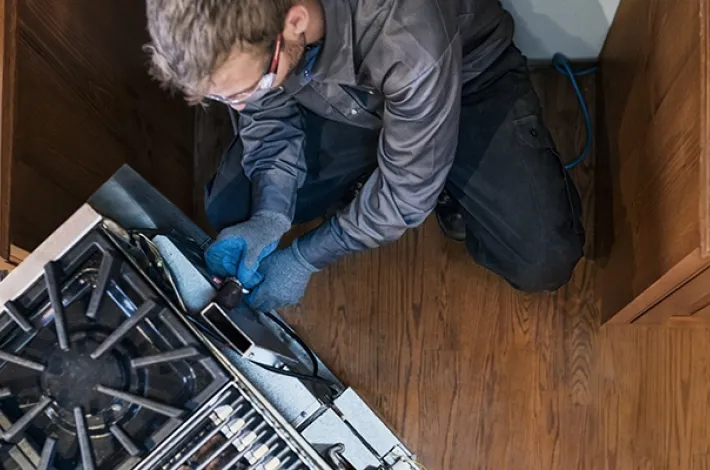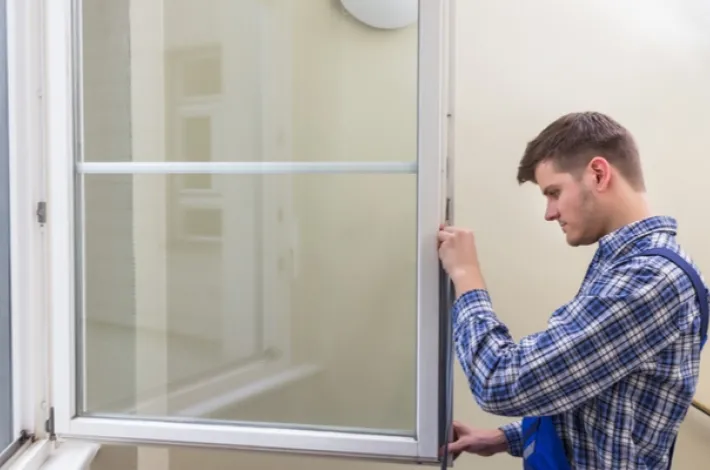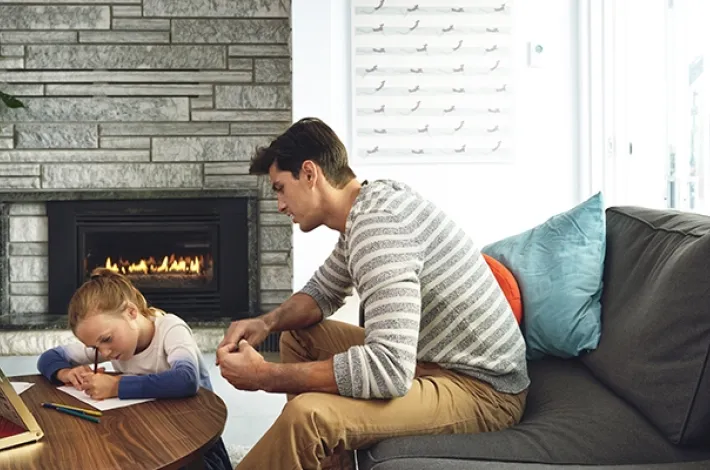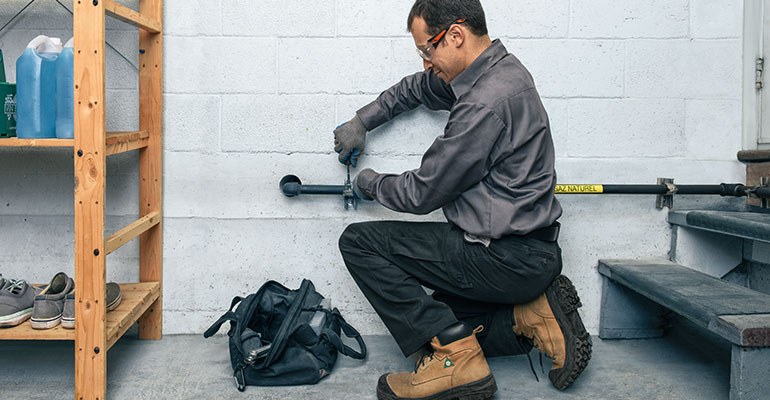
A few simple gestures to maintain your home appliances

The latest natural gas appliances are beating performance and efficiency records. To benefit over the long run, it is essential that you perform regular maintenance…like you do with a car!
There’s no question about performing maintenance on a car. Every 5,000 km, we change the oil, we regularly add window washer fluid, etc., following the manufacturer’s recommendations. So why wouldn’t we take as good care of our furnace or hot water heater? Like with a car, maintaining home appliances, whether electric or natural gas (boiler, furnace, hot water heater, cooktop or stove) helps prevent breakdowns and extend their lifespan.
While the full periodic inspection of these systems must be performed by a professional with a technical certification in gas appliances, you can still perform small maintenance on your furnace, hot water heater or cooktop. Feel free to have a professional explain these simple actions, such as when installing or replacing an appliance, or at the first maintenance. In all circumstances, refer to the instructions in the installation and usage manuals from the manufacturers, who are the only ones authorized to explain how to maintain their systems. And if you have any doubt, call a maintenance professional; he or she will be happy to help you!
Furnace: away with dust!

Because of the circulating air in your hot air generator (or furnace), as needed to heat and sometimes to cool, a lot of dust and particles are amassed in the system’s air filter. The cleaner it is, the better. It is therefore recommended to regularly verify how much dust has accumulated, such as before, during and after the heating season and, if applicable, the cooling season, or every three months. If the filter is clogged, it is recommended that one replace or clean it.

In general, as illustrated in the diagram, the filter is located inside the system, in the ventilator door, or between the ventilator and the air return duct. If it is paper, it can be thrown away and replaced by a model of the same dimensions sold in renovation centres or by equipment resellers and installers. If it is steel wool or polymer, it can be cleaned: simply vacuum to remove the dust and rinse it under water. Wait for it to dry before putting it back in place in the right direction because, yes, the filter has a right direction, the direction the air moves, as indicated by small arrows on the filter. At all times, and if you have a different filter than the one we just mentioned, refer to the manufacturer’s guide, which will help you locate the filter, determine the direction of installation and learn the frequency and method for cleaning it. As a precaution, consider turning off the electricity to the furnace at the circuit panel before doing any work.
In addition, while the manufacturer’s manual indicates the frequency for total system maintenance performed by a qualified professional, you can still regularly verify that the interior and exterior air supply and exhaust are not obstructed, or dusty if there are diffusion grills, which will maximize the system’s operations.
Tank water heater: empty and inspect!
A tank hot water heater always looks good, but it needs a little bit of attention. Actually, water from the network isn’t always clean, and can include small particles in addition to naturally containing oxygen.
Particles heavier than water fall to the bottom of the hot water heater, accumulating there, and with time, turn into mud. Experts recommend partially emptying the tank once per year to remove this sediment. The method is simple:
Plan several trips to empty the bucket until the water coming out the tank is clear. Also, after it’s empty, it is good to open all the faucets in your home to expel the air that may have entered your pipes.
The oxygen in the water corrodes the tank walls. To prevent this, the hot water heater is equipped with an anode to which the oxygen will attach and corrode. Experts recommend conducting a visual examination every three years to see how degraded the anode is. If you check the anode yourself, it is important to turn of the cold water supply to the hot water heater and open a hot water faucet somewhere in the house. This will prevent you from being splashed or scalded. If the diameter of the anode’s thickness is less than 13 mm (1/2 in.) or if it is covered in calcium, it is time to call in a professional to replace it. The appliance’s installation guide indicates its location, generally in the top of the hot water heater, as illustrated in the diagram.
To lower your energy costs, you can set the hot water heater’s thermostat to 60° C (140° F) – this will also reduce the risk of burns. It is best to conduct regular visual inspections of your hot water heater to check for leaks, signs of deterioration or clogging. Also consult your installation manual to find out how often to have a complete inspection of your tank hot water heater by a qualified professional.
An always spotless cooktop!
To maintain their efficiency, cooking appliances using natural gas must be cleaned often. Ideally, in addition to regular cleaning, you can remove the burners and soak them in hot soapy water. Their receptacles can be cleaned with a slightly abrasive solution of water and baking soda, for example. After rinsing, all the elements must be air dried before reinstallation. If the burner holes are blocked, a small needle may fix the problem. Be careful to put them back correctly, facing the ignition rods. And don’t forget to regularly clean the hood to maximize ventilation while cooking!
For any other information or for help with maintaining a natural gas appliance, feel free to contact a Énergir Certified Natural Gas Partner or Gaz Métro Plus.
Preventing carbon monoxide leaks from natural gas equipment
Reminder: Natural gas is not toxic, however, poorly maintained equipment can release carbon monoxide (CO) and be harmful to your health.
Prevention methods:
- Install a certified carbon monoxide detector. It’s a simple and inexpensive way to prevent poisoning.
- Regularly check that the detector is operating properly and that the battery is strong.
You may also like...






